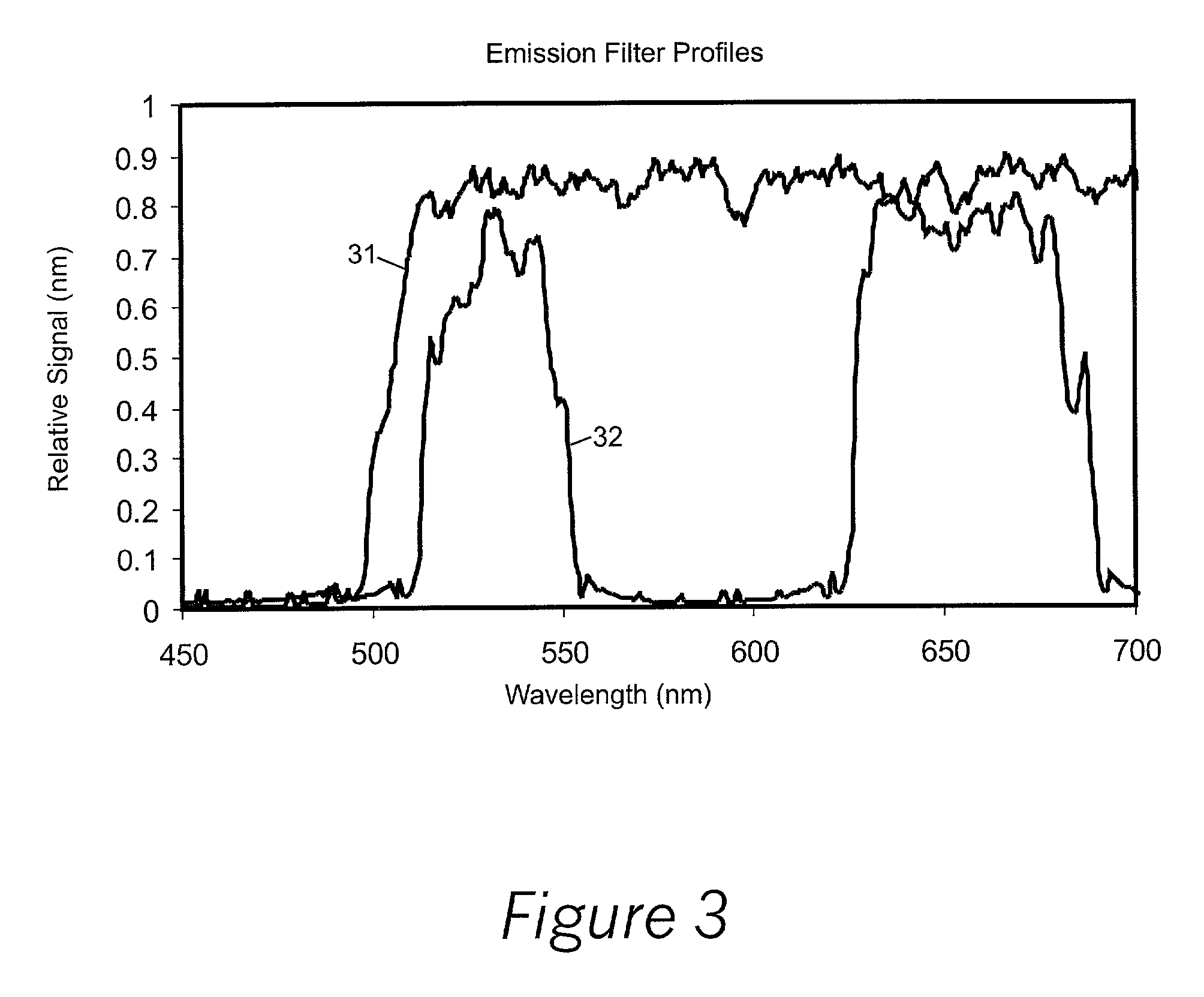Instantaneous dual band fluorescence detection systems
a detection system and dual band technology, applied in the direction of fluorescence/phosphorescence, analysis by material excitation, instruments, etc., can solve the problems of instrument cost burden, sample aging, and degrade the measurement of flux ratio between bands
- Summary
- Abstract
- Description
- Claims
- Application Information
AI Technical Summary
Benefits of technology
Problems solved by technology
Method used
Image
Examples
Embodiment Construction
[0041] Throughout the following, one state of polarization is termed h and its complement is v. These need not be literally horizontal and vertical, but either h or v must correspond to the major axis of the state of polarization used to excite the sample in any given measurement.
[0042] The term spectral band is used to refer to a set of wavelengths of light, either in the visible, infrared, or ultraviolet spectral region. The term probe is used to describe a substance that emits fluorescent light when optically excited, which enables measuring one or more properties of a sample, through observation of the brightness, spectral distribution, polarization, or combinations thereof, of the fluorescent emission. The term spot is used to describe a spatial region on the sample that is optically excited, as well as to describe the rays emanating from that region as they propagate through the optical system and form images thereof at a detector.
[0043] FIG. 1 shows an instrument in accordanc...
PUM
| Property | Measurement | Unit |
|---|---|---|
| thickness | aaaaa | aaaaa |
| fluorescence | aaaaa | aaaaa |
| fluorescence intensity | aaaaa | aaaaa |
Abstract
Description
Claims
Application Information
 Login to View More
Login to View More - R&D
- Intellectual Property
- Life Sciences
- Materials
- Tech Scout
- Unparalleled Data Quality
- Higher Quality Content
- 60% Fewer Hallucinations
Browse by: Latest US Patents, China's latest patents, Technical Efficacy Thesaurus, Application Domain, Technology Topic, Popular Technical Reports.
© 2025 PatSnap. All rights reserved.Legal|Privacy policy|Modern Slavery Act Transparency Statement|Sitemap|About US| Contact US: help@patsnap.com



